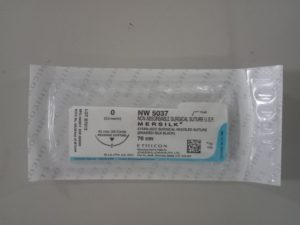Natural sutures are surgical sutures made from materials that occur naturally in the environment, such as animal or plant fibers. These sutures are commonly used in surgical procedures and have a number of advantages over synthetic sutures.
Uses of natural suture
One of the main advantages of natural sutures is that they are biodegradable, meaning that they break down over time and are absorbed by the body. This eliminates the need for a second procedure to remove the suture, reducing the risk of complications and discomfort for the patient.
Natural sutures are also less likely to cause an inflammatory response or allergic reaction in the body, as they are made from materials that are recognized by the body’s immune system. This can help to reduce pain, swelling, and other post-surgical complications.
Types of natural suture
There are several types of natural sutures available, including:
- Silk Sutures: Silk sutures are made from the fibers of the silkworm cocoon and are known for their strength and durability. They are commonly used in cardiovascular, ophthalmic, and plastic surgery.
- Catgut Sutures: Catgut sutures are made from the submucosal layer of the intestines of sheep or cows. They are typically used for internal sutures and are absorbed by the body within 60 to 90 days.

- Linen Sutures: Linen sutures are made from flax fibers and are known for their strength and resistance to infection. They are commonly used in surgical procedures involving the skin and soft tissues.
- Cotton Sutures: Cotton sutures are made from the fibers of the cotton plant and are commonly used in surgical procedures involving the skin and soft tissues. They are absorbable and typically break down within 30 to 90 days
Conclusion
Natural sutures are an effective and safe option for surgical procedures, particularly for patients who may be at increased risk of adverse reactions to synthetic sutures. It’s important to consult with a healthcare provider or other expert to determine the most appropriate type of suture for your specific needs and circumstances.